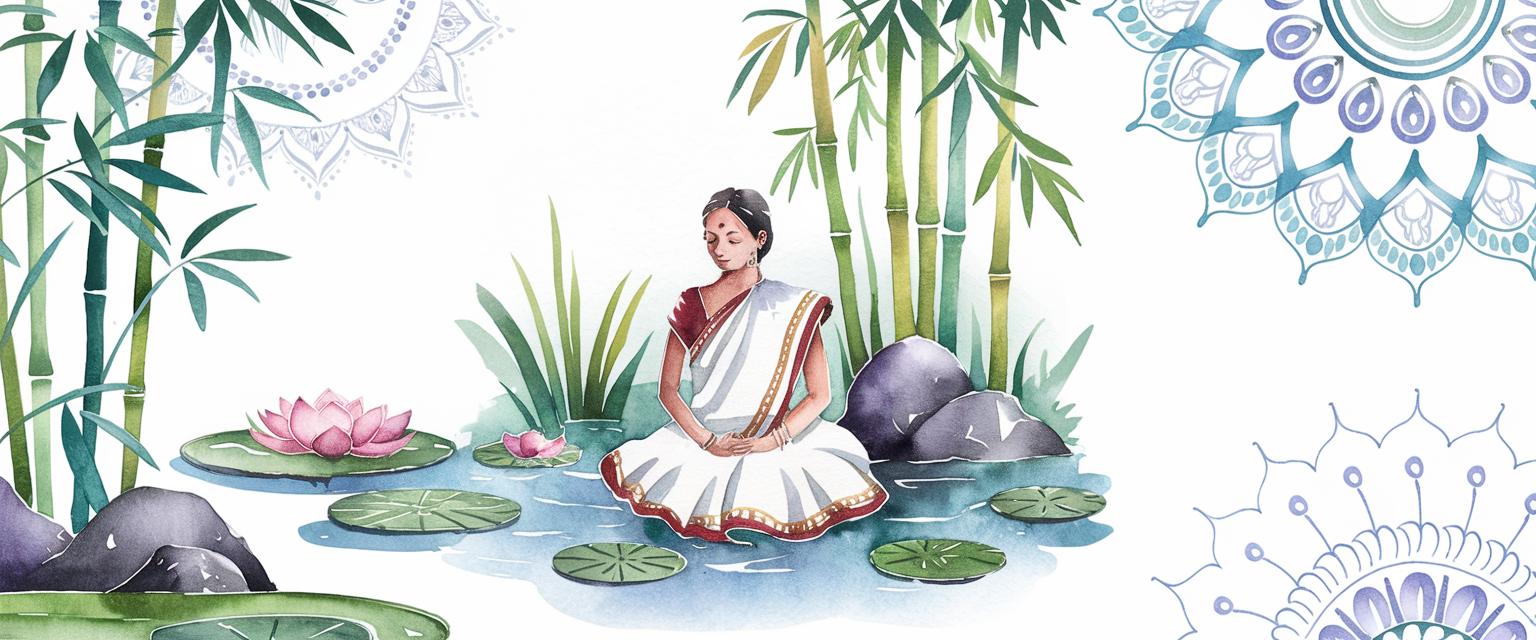Table of Contents
Healing for Indian Women: Gentle Mindfulness Guide
Challenges the cultural narrative that glorifies silent endurance and explores what true emotional and psychological healing means for Indian women, away from societal judgment.
1. Introduction
Have you ever smiled through family gatherings while feeling empty inside? Or stayed quiet when you wanted to speak up because “that’s what good women do”?
For many Indian women, the pressure to remain strong, silent, and selfless comes at a steep cost to our emotional wellbeing. We’re taught from childhood that endurance equals virtue—that our worth lies in how much we can bear without complaint.
But healing for Indian women isn’t about perfecting the art of silent suffering. It’s about reclaiming our right to acknowledge pain, express emotions, and prioritize our mental health without guilt.
This isn’t selfish — it’s necessary. When we heal, we show up more fully in all areas of our lives, from relationships to careers to parenting. We break cycles that have persisted for generations.
In this guide, you’ll find practical ways to begin your healing journey while navigating cultural expectations. You’ll discover how to create safe spaces for emotional expression and take small steps toward self-compassion that honor both your heritage and your happiness.
I remember the first time I chose my wellbeing over others’ expectations. The guilt was overwhelming, but that small act of self-care became the foundation for deeper healing.
Mindful Moment: Take a deep breath. Notice how it feels to simply acknowledge that you deserve healing, regardless of what anyone else believes.
Disclaimer: The information provided in this blog post is for general informational and educational purposes only and does not constitute medical advice. Always seek the advice of a qualified health provider with any questions regarding your health.
Beyond Endurance: What True Healing Means
Healing for Indian Women: A Shift in Perspective
In many Indian households, a woman’s capacity to endure hardship quietly is celebrated as her greatest virtue. But there’s a profound difference between resilience and suppression.
True healing begins when we recognize that acknowledging pain isn’t weakness—it’s awareness. Speaking up about emotional struggles isn’t failure—it’s courage.
Cultural expectations in India often show up as:
Pressure to be the perfect daughter, wife, mother, and daughter-in-law
Prioritizing others’ needs before your own
Sacrificing personal dreams for family obligations
Self-compassion offers a different path. It means:
Treating yourself with kindness
Giving yourself permission to be human
Honoring your emotional needs
Try this: Write a letter to yourself from the perspective of someone who loves you unconditionally.
I practice self-compassion by setting aside five minutes each morning to check in with my feelings before jumping into responsibilities.
Mindful Moment: Remember, your feelings are valid and deserve to be acknowledged.
Navigating “Log Kya Kahenge”: Reclaiming Your Voice
Breaking Free: Overcoming ‘Log Kya Kahenge’
“Log kya kahenge?” (What will people say?) — these three words have silenced countless Indian women.
They shape everything from:
Career choices
Clothing
Whether or not we seek therapy
Examples:
A woman abandons art to be seen as “respectable”
A new mom hides postpartum depression
A wife endures neglect to avoid “shaming” the family
The emotional cost? Anxiety, depression, and disconnection from your true self.
How to Reclaim Your Voice:
Speak honestly with one trusted person
Use “I” statements to own your emotions
Align choices with your core values
Priya, a 32-year-old from Mumbai, said: “I spent years worrying what my family would think about therapy. But once I went, I found peace—and built boundaries that protect my mental health.”
Mindful Moment: You are worthy of prioritizing your well-being, regardless of what others may say.
Tip for family conversations:
Say, “I understand this is important to you, and I respect that. I’m making choices that support my wellbeing.” Then change the subject or step away if needed.
Embracing Your Healing Journey: Practical Steps
Gentle Steps to Healing: A Mindful Approach
Mindfulness helps you face emotions without being overwhelmed. Try these:
Box Breathing: Inhale–4, Hold–4, Exhale–4, Hold–4
Body Scan: Bring awareness to every part of your body
Mindful Walking: Focus on sounds, air, and footsteps
Mindfully engaging with mandala art can also be a meditative tool on your healing journey.
Seek Support That Understands Your Context
Culturally sensitive therapy can be transformative. Try:
Build a Supportive Circle:
Join online groups for Indian women
Start a judgment-free sharing circle
Connect with a mentor
Incorporate Small Self-Care Practices:
5 minutes of breathing or gratitude journaling
Morning or bedtime ritual
Time in nature
Activities that spark joy
I keep a small journal by my bed and write three things I’m grateful for each night. It helps me stay grounded even during difficult times.
Mindful Moment: What tiny act of self-care could you implement today?
Conclusion: Honoring Your Healing Journey
Healing as an Indian woman often means questioning deeply ingrained cultural beliefs that equate suffering with strength.
It means recognizing that:
Your emotional wellbeing matters
You deserve support, not silence
Small, mindful actions can begin powerful shifts
Start today with just one step: a breath, a journal entry, a moment of truth.
Your healing journey is uniquely yours. There’s no perfect path or timeline—only the courage to begin and keep going, one mindful moment at a time.
🌿 Subscribe to our newsletter for weekly wellness tips and mindful practices from Hey Mandala.

